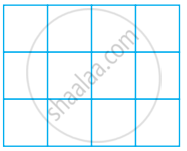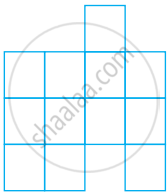Advertisements
Advertisements
प्रश्न
In the given figure, perimeter of (ii) is the same as (i).
 |
 |
| (i) | (ii) |
विकल्प
True
False
उत्तर
This statement is False.
Explanation:
 |
 |
| (i) | (ii) |
By observing the figures, we can say that there are 2 new sides added in figure (i).
Therefore, the perimeter of (ii) is not same as (i).
APPEARS IN
संबंधित प्रश्न
The length of a hall is 18 m and its width is 13.5 m. Find the least number of square tiles, each of side 25 cm, required to cover the floor of the hall,
(i) without leaving any margin.
(ii) leaving a margin of width 1.5 m all around. In each case, find the cost of the tiles required at the rate of Rs. 6 per tile
The table given below contains some measures of the square. Find the unknown values.
| Side | Perimeter | Area |
| 6 cm | ? | ? |
The table given below contains some measures of the square. Find the unknown values.
| Side | Perimeter | Area |
| ? | 100 m | ? |
Sanju completes 10 rounds around a square park every day. If one side of the park is 110 m, then find the distance covered by Sanju in a day in terms of kilometers and meters
1 sq cm = ______ cm × 1 cm.
Parmindar walks around a square park once and covers 800 m. What will be the area of this park?
A piece of string is 30 cm long. What will be the length of each side if the string is used to form a square?
Find the cost of fencing a square park of side 250 m at the rate of ₹ 20 per metre.
In the given figure, if (ii) is divided into squares of unit length, then its area is 13 unit squares.
 |
| (ii) |
Two figures can have the same area but different perimeters.
